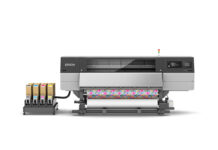 Sign Builder Illustrated’s Lori Shridhare delves into what it takes to run a successful digital signage program. In the first part of the article, she takes a look at the free and paid software solutions currently on the market for digital signage. Be sure to also read the second half, which focuses on what users should look for in digital signage software.
Sign Builder Illustrated’s Lori Shridhare delves into what it takes to run a successful digital signage program. In the first part of the article, she takes a look at the free and paid software solutions currently on the market for digital signage. Be sure to also read the second half, which focuses on what users should look for in digital signage software.
Shopping around for digital signage packages brings up a range of options from free software to programs that charge monthly fees. Software may be Web-based or customized and proprietary with few or no Web components. In choosing a package for a customer, it’s best to consider their needs, budget, and goals for the digital signage. If a customer requests one simple display for their business, the choices may be easy to decipher. Turn this into a network of hundreds of screens, and the software and package options can get complicated.
Software Solutions
One company that offers Web-based software is Deploid, a family-owned business based in Seattle. Founded in 2007, the company provides both digital signage hardware and software, working on everything from software integration to content creation. Recently, the company has seen more demand in the restaurant menu board market, says President Nathan Mead, who says his must-haves for digital signage software include scheduling, role-based administration, and network monitoring. “These are the features that separate many run-of-the-mill solutions from enterprise requirements,” he says. Add-on features which he believes are not crucial, but always good to have, include integration with social networking and mobile devices.
When it comes to cost, clients with budgets large and small can now enter the digital signage arena, choosing from hundreds of companies with extremely different offerings. “There are those providing solutions as simple as a rotating PowerPoint presentation or as robust as a multi-screen authoring and scheduling platform,” says Mead. “When I first started digital signage, some start-ups were charging as much as $100/month just to have one screen hosted on their servers. The prices have fallen precipitously since then and range from free service to a high end of $70/month. Frankly, there are good feature sets across the board, but it really depends on budget constraints and project requirements.”
Underlining the point that digital signage is now accessible to everyone from the small mom-and-pop to the large university, is the availability of free digital signage. A recent Google search pulled up at least a dozen companies offering this entrée into a digital signage program. As long as you have the Internet as your ‘control center,’ and a computer and screen to display your content, you can easily sign on to use cloud-based digital signage software.
One company in this market is MediaSignage. Based in Westlake Village, California, the business was co-founded in 2006 by Sean Levy and Alon Peleg who envisioned a business model built around free digital signage for everyone. “So anyone can use 90 percent of the software for free and install it on unlimited number of remote screens,” says Levy. In addition to their free software, there’s a step up with the enterprise edition, which he says is an inexpensive choice that includes add-ons such as branding, white label Web portal, access control lists, and privileges.
 Levy says that together with “devoted fans” of their software, the team does everything from designing to promoting the software. “Our software is based on an open-source framework available through the public Apache repository,” Levy says. “It is an incredible application that supports all the latest Web standards including HTML5, Flash, HD videos, MRSS, Weather, Live TV, a robust open-source software development kit, and much more. Our goal is to offer the best digital signage solution that can propagate seamlessly to all digital mediums including electronic billboards, mobile, tablets, and all types of screens. Build it once and run everywhere.”
Levy says that together with “devoted fans” of their software, the team does everything from designing to promoting the software. “Our software is based on an open-source framework available through the public Apache repository,” Levy says. “It is an incredible application that supports all the latest Web standards including HTML5, Flash, HD videos, MRSS, Weather, Live TV, a robust open-source software development kit, and much more. Our goal is to offer the best digital signage solution that can propagate seamlessly to all digital mediums including electronic billboards, mobile, tablets, and all types of screens. Build it once and run everywhere.”
As proprietary, customized software is limited in its ability to cross platforms, MediaSignage is hoping that customers will join the growing legions turning to cloud-based software that will allow digital signage content to be more universally shared. “The MediaSignage software is based on a new technology called Adobe Integrated Runtime that allows the platform to run anywhere,” says Levy. “This means that you build your presentation once and it runs in iOS (iPhone / iPad), Android Windows, Mac, Linux, and even inside Web browsers.”
Another company to offer free, Web-based software is Rise Vision (see the company’s blog at http://www.risevision.com/blog/ for questions that Sign Builder Illustrated posed to founder Byron Darlison, along with comments from their users and customers). Based in Toronto (though mainly a virtual organization), the company has been making software since 1992 with a particular focus on Web services for digital signage. In addressing the benefits of choosing a cloud platform, Darlison says it offers the lowest cost of set-up and operation, automatic upgrades, and a platform that is manageable from any browser and shared among all stakeholders (suppliers, customers, advertisers, etc.).
While most companies look to accentuate their unique selling points, Rise Vision wants to emphasize what makes them non-proprietary. “What makes us unique is our steadfast position to not be unique, to not be proprietary and different, but rather open and complementary to the worldwide Web,” says Darlison. “To accomplish this we have focused on providing a Web platform for digital signage that utilizes non-proprietary HTML for content, and we have open-sourced our applications so that they can be used and extended in any way that our users want to. Our users don’t require proprietary, non-leveraged skills, what they need is what they already require – Web designers and Web savvy people, or access to them.”
As MediaSignage does, Rise Vision offers a free software and a fee-based option. “Our platform is available in two price points – we provide free digital signage software with unlimited clients and displays, or for $150 per month our users can brand our solution,” says Darlison.
If your digital signage network has complex needs, including wayfinding and other data integration that should be customized, you might consider a proprietary digital signage solution such as Four Winds Interactive (www.fourwindsinteractive.com), a company that spun off from a media distribution company in 2006 follows a business model geared to managing large networks. After creating a successful interactive kiosk design product, the company saw the potential of designing non-interactive signage as well. Currently, their Web-based software includes features to streamline the management of networks that include signs, interactive displays, video walls, mobile and Web deployments. “Lots of different platforms can be managed from the solution, so we’re less a digital signage company than an enterprise digital communications management company,” says Project Manager Doug Chase. “The core product includes an interface design tool and a communications network management tool. We also provide easy ways to integrate with all kinds of data sources and tools to manage your content and network from the Web.”
 Currently, says Chase, the company is working on two initiatives. “First, we want to make it easy for our customer to deploy consistent digital communications content to desktop computers, to the Web, mobile, and to digital signage together. Second, we’re working hard to provide packaged components, both interactive and static, which we’re calling ‘apps’ that you can pull together very easily, customize for your company, and deploy widely with very little friction.”
Currently, says Chase, the company is working on two initiatives. “First, we want to make it easy for our customer to deploy consistent digital communications content to desktop computers, to the Web, mobile, and to digital signage together. Second, we’re working hard to provide packaged components, both interactive and static, which we’re calling ‘apps’ that you can pull together very easily, customize for your company, and deploy widely with very little friction.”
The trends Chase is seeing these days encompass an overall broadening and expansion of the marketplace. “Hardware prices have come down, and at the same time more people expect these rich interactive experiences in more places, on more platforms – for very utilitarian purposes, like employee communications and manufacturing, and on the other end of the spectrum purely for enhancing public spaces, interactive video art walls, and things like that. We’re seeing more pixels in more places in general,” he says.











